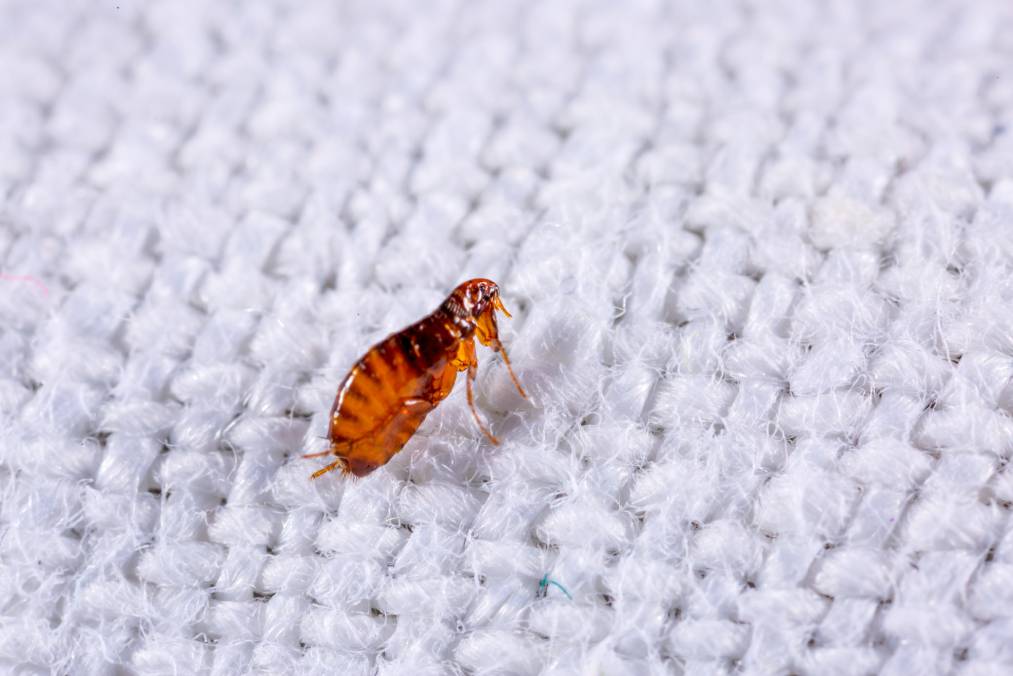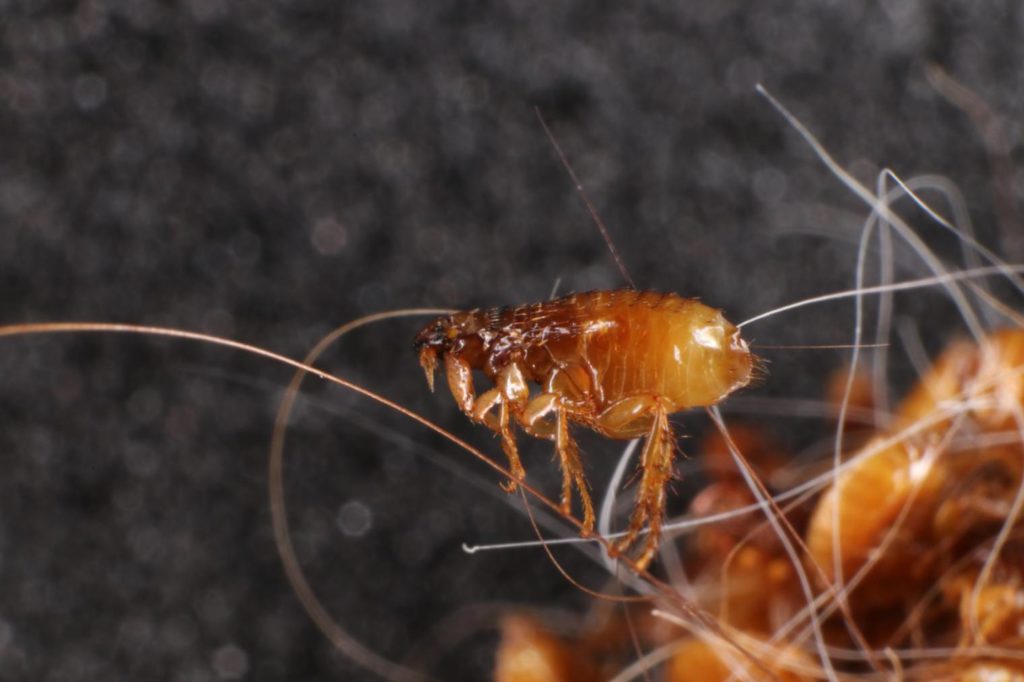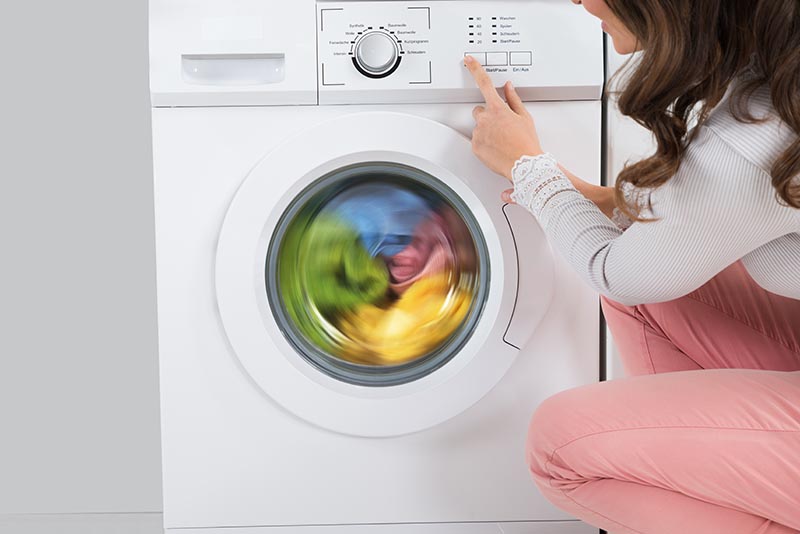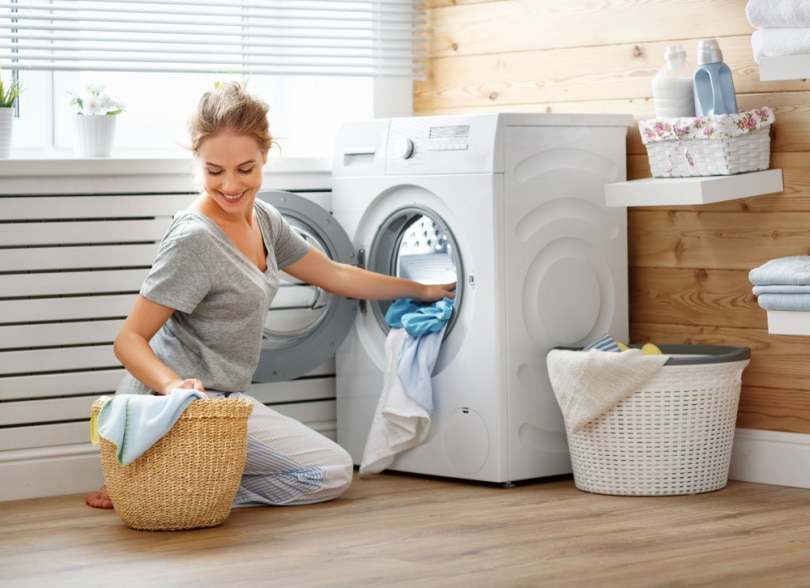Does the Dryer Kill Fleas or Other Insects? Facts & FAQ
-
Pete Ortiz
- Last updated:

There’s no time to waste when you spot the first sign of fleas in the home. The elusive biting pests can lay up to 50 eggs a day and expose your family to severe health hazards, making it crucial to eradicate them sooner rather than later.
Adult fleas live, feed, and reproduce on cats and dogs, but eggs can appear anywhere your four-legged friends lie down. After washing and medicating your pet, there’s still plenty of work ahead to remove immature fleas.
Your vacuum is your primary weapon in eliminating fleas in the home, but your dryer could be invaluable if your pet has been lying around your bed, their bed, or piles of clothes. Fleas can’t handle the high heat of a dryer at any life stage, so it’s an easy way to get every last one.
Does a Dryer Kill Fleas?
From egg to adult, fleas cannot handle temperature extremes at any stage. Adult fleas will begin to die as temperatures are consistently below 46.4°F, and mortality rates increase as the temperature decreases. They can live for as long as 10 days when it’s 37°F but typically only last up to 5 days when the temperature falls below freezing.
A flea’s upper threshold is even worse. Adult fleas cannot survive when the temperature reaches 95°F, while eggs can only survive in temperatures up to 100.4°F. It typically takes at least 2 days at this sustained temperature to kill them, but the mortality rate quickens as it gets hotter. When the temperature reaches 103°F, larvae will only survive for about an hour.
The average dryer can reach temperatures of 125°F–135°F, and some can even exceed 170°F on their highest setting. That’s more than enough heat to kill fleas at any stage in their life cycle.
At the same time, the dryer will dry the fleas out, another effective method of removing them. Even in low heat, fleas need at least 50% relative humidity. If you can do so without ruining them, put your flea-infested bedding and garments in the dryer on high heat for 30 minutes to kill any lingering fleas.

Do Fleas Live on Clothes?
Fleas are unlikely to stay on the clothes you’re wearing. Humans lack the hair that provides the ideal warm cover adult fleas desire. They may jump on you and in your shoes to grab a bite off of you but won’t stay on your clothes for more than 24 hours before heading off in search of hairier pastures.
Adult fleas are parasitic and live on their furry hosts, even reproducing on them. But while the mature ones can keep a firm hold on your pets, flea eggs will slide off and fall into whatever the dog is lying on, whether it’s a dog bed, a pile of clothes, carpet, couch, or the foot of your bed.
How Long Do Fleas Live In Your Carpet and Clothes?
Eggs hang around for 2–10 days before hatching into larvae, with the incubation period depending primarily on the temperature. They’ll hatch into larvae quickly in temperatures nearing 90°F and relative humidity above 75%.
In ideal conditions presented during the summer months, larvae will live about 4–24 days before moving on to the next phase. They spend their brief time subsisting off flea feces, dandruff, and other organic debris and burrowing away from the light.
When the time is right, flea larvae spin a sticky cocoon and become pupae. Fleas emerge from their protective shells in as little as 5 days in optimal conditions, but can stay in them for up to a year until a host arrives or the climate changes.

Do You Need to Wash Your Clothes Before Putting Them In the Dryer to Kill Fleas?
Considering the life cycle, we can see that an immature flea will be more or less stuck in its environment for almost 2 weeks in ideal conditions. That doesn’t mean you should wait to clean the house after finding fleas on your pet. But it should offer reassurance that you can get rid of fleas with a thorough approach.
Once you find fleas on your pet, consider all the places they may have sat or crossed over during the day. If it has folds and fibers to catch and hide eggs or larvae, it’s probably a good idea to throw it in the dryer to kill any potential fleas. Some typical washable items that may contain flea eggs include:
- Sheets and comforters
- Dog beds
- Loose clothing
- Stored clothes
- Area rugs and mats
- Stuffed animals
- Pillows
- Shoes
- Towels
While a dryer can kill all fleas if given enough time, the best approach is to wash the affected items and then use the dryer. Washing will help you clean more eggs and fleas out of the clothes, which the dryer won’t do, and ensure that they are 100% dead.
How to Wash and Dry Flea-Infested Clothes
The only part of the washer/dryer tandem that a flea can survive in is the water. Fleas can live in water, suspended by surface tension, for a week and stay submerged for up to 24 hours. Unfortunately for them, adding detergent and high heat will be more than enough to kill them in a fraction of the time.
The EPA recommends washing your bedding and pet bedding at least every 2–3 weeks to help prevent fleas in the home. But if you’ve already identified a flea problem in the house, follow these steps to wash them out of your clothes and bedding:
- Wash fabrics at the highest possible heat for at least 10 minutes, using bleach and detergent if possible
- Repeat the cycle 2–3 times before drying
- Dry the load on the highest possible setting for at least 30 minutes
Always follow your manufacturer’s wash and care instructions to avoid damaging your garments and bedding. The highest setting on many washing machines only reaches about 130°F, so the longer you can wash your clothes at that temperature, the better the chances of killing every flea.

What Other Insects Will a Dryer Kill?
A dryer is an excellent tool for fighting fleas and other unwelcome biting pests that might show up in the laundry, primarily bed bugs and ticks. Ticks are less picky about their food source and will be more likely to hang out on your clothes, while bed bugs are known to inhabit bedspreads. Tossing potentially infested items in the dryer for at least 30 minutes on high heat will effectively kill these pests.
Is Drying My Clothes Enough to Get Rid of Fleas?
Drying your clothes will expose fleas to intolerable heat and dry them out. But flea eggs, larvae, and pupae are rarely limited to washable items. Washing and drying affected items is only one part of an effective treatment plan.
The first step is to treat your cats and dogs. Pets will need a thorough cleaning and a flea preventative treatment. Your vet will be the best resource in helping you find an effective product. By taking away the food source, you’ll leave adult fleas with few options in the home to continue their life cycle.
After treating your pet, there’s still the question of immature fleas, which can appear almost anywhere. Along with regular washing of clothes and bedding, some of the most critical steps in managing a flea infestation include:
- Vacuuming carpets and floors daily, focusing on baseboards, cracks, crevices, and anywhere that eggs may bounce
- Steam cleaning carpets to destroy lingering pupae
You may also benefit from a dehumidifier if your home is particularly humid. Fleas cannot survive for more than a few days when the relative humidity is below 50%. It won’t replace the need to vacuum, but monitoring and maintaining a drier environment will be dissuasive and harmful to fleas.
Conclusion
Fleas may be crafty, but they’re not particularly tough. That makes them relatively easy to control if you take proactive preventative measures and educated steps to remove them once they’re in your home. Your vacuum and your dryer will be your best allies when you need to kill fleas. While extreme infestations may warrant professional intervention, following these tips will ensure you keep your home pest-free!
Featured Image Credit: Vera Larina, Shutterstock
Contents


